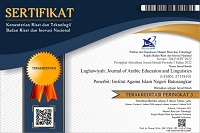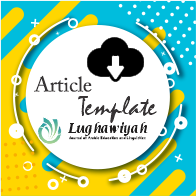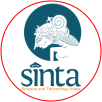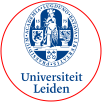TA'RĪB AS AN ARABIC MODERNIZATION AND THE SPIRIT OF NATIONALISM: A HISTORICAL STUDY OF ARABIZATION / TA’RIB SEBAGAI MODERNISASI BAHASA ARAB DAN SEMANGAT NASIONALISME: SEBUAH KAJIAN HISTORIS TENTANG ARABISASI
Abstract
Keywords
Full Text:
PDFReferences
Al-Yafi, A K. (2008). Daur al-Ta'rīb fi Ta'ṣīl al-Thaqāfah al-Dhātiyyah al-'Arabiyyah. Shabakah Ṣaut al-‘Arabiyyah. April 7. https://www.voiceofarabic.net/ar/articles/1917
Al-Jawarinah, Y. (2013). Azmah Tawhid al-Musṭalāḥ al-'Ilmiyyah al-'Arabiyyah’. Shabakah Ṣaut al-‘Arabiyyah. September 7. https://www.voiceofarabic.net/ar/articles/2982
Al-Jahidz, A. (1965). Rasa-il Al-Jahidz. Cairo: Maktabah Al-Khanji.
Aslam, W. et el. (2020). Misplaces States and the Politics of Regional Identity: Towards a Theoretical Framework. Cambrigde Review of International Affairs, 12, 1-22. https://doi.org/10.1080/09557571.2020.1723061
Atabik, A. & Muhdlor, A. Z. (1998). Kamus Kontemporer Arab-Indonesia. Yogyakarta: Multi Karya Grafika.
Aziz, A. (2019). Ta’rib dan Semangat Nasionalisme Kebahasaan Arab. Al Amin: Jurnal Kajian Ilmu dan Budaya Islam. 2(1), 38-48. https://doi.org/10.36670/alamin.v2i1.15
Elshakry, M. (2014). Translation Movements in History: Science and Civilization in Nineteenth Century Histories of Islam and Europe. HSTEM, 4.
Filimonova, E. (2005). Clusivity: Typology and Case Studies of Inclusive-exclusive Distinction. Amsterdam: John Benjamins Publishing Company.
Friederike, L. (2020). The Writing’s on the Wall: Spaces for Language-Independent and Language-Based Literacies. International Journal of Multilingualism, 17(3), 1-22. https://doi.org/10. 1080/14790718.2020.1766466
Hadi, S. (2005). Glosarium Kata dan Istilah Asing dalam Bahasa Arab. Yogyakarta: Seksi Penerbitan FIB UGM.
Hadi, S. (2002). Berbagai Ketentuan Baru dalam Ta’rīb: Pembahasan Seputar Perkembangan Mutakhir dalam Bahasa Arab. Humaniora, 14(1), 77-85.
Hallaq, H. (1999). Dirāsat fī Tārīkh al-Haḍārah al-Islāmiyyah. Beirut: Dar an-Nahdhah al-Arabiyyah.
Hanna, S. (2018). Knowledge Production and Identity Formation in Two Arabic Translations of the Bible. Alif: Journal of Comparative Poetics, 10(38), 11-45. https://www.jstor.org/stable/26496384
Hendal, B. (2019). The Impact of Globalization, Arabization, and Englishization on Translation in the Arab World. International Journal, 7(2), 28-34. https://doi.org/10.15640/ijll.v7n2a
Hitti, P. K. (2005). History of the Arabs: Rujukan Induk dan Paling Otoritatif tentang Sejarah Peradaban Islam. Jakarta: Serambi.
Ibrahim, R. A. J. (2001). Dirāsat fī al-Dalālah wa al-Mu'jam. Kairo: Dar al-Gharib.
Isa, A. (1923). al-Tahzib fī Uṣūl al-Ta'rīb. Kairo: Mathba’ah Mishr.
Khalifah, A K. (2003). al-Lughah al-'Arabiyyah 'alā Madārij al-Qarn al-Wāhid wa al-'Ishrīn. Amman: Dar al-Gharb al-Islamiy.
Khalifah, A K. (1988). al-Lughah al-'Arabiyyah wa al-Ta'rīb fī al-'Aṣr al-Hadīth. Oman: Majma' al-Lughah al-'Arabiyyah al-Urduniy.
Majma' L A. (2005). al-Mu'jam al-Wasīth. Kairo: Maktabah al-Syuruq al-Dauliyyah.
Ma'luf, L. (2005). al-Munjid fī al-Lughah wa al-A'lām. Beirut: Dar al-Masyriq.
Masluh, S A. (2014). Fī al-Lisāniyyāt al-‘Arabiyyah al-Mu’asirah. Kairo: ‘Alam al-Kutub.
Mas'ud, J. (2001). al-Arabiyyah al-Fuṣḥā: Sya'latun Lā Tanṭafi'. Beirut: Bait al-Hikmah.
Mu’in, A. (2004). Analisis Kontrastif Bahasa Arab dan Bahasa Indonesia. Jakarta: Pustaka Al-Husna Baru.
Qadir, C.A. (2002). Filsafat dan Ilmu Pengetahuan dalam Islam. Jakarta: Pustaka Obor.
Syamsu, P K. (2018). The Contribution of Arabic in Indonesian Literacy. Jurnal Al-Bayan: Jurnal Jurusan Pendidikan Bahasa Arab, 10(2). 281-294.
Syamsul H. (2002). Berbagai Ketentuan Baru dalam Ta’rib. Humaniora, 14(1).
Tawwab, R. A. (1997). Fusulun fi Fiqh al-'Arabiyyah. Kairo: Maktabah al-Khaji.
Wafi, A. W. (1962). ‘Ilm al-Lughah. Kairo: Maktabah Nahdhah.
Ya'kub, E. B. (1982). Fiqh al-Lughah al-'Arabiyyah wa Khaṣāisuhā. Beirut: Dar al-Tsaqafah al-Islamiyah.
Zaga, M. & Ronen Z. (2020). Characterizing the Language Boundaries of the Arab Middle East and North Africa: A Geolinguistic Analysis. Handbook of the Changing World Language Map, 231-245.
DOI: http://dx.doi.org/10.31958/lughawiyah.v4i2.6363
Refbacks
- There are currently no refbacks.

This work is licensed under a Creative Commons Attribution-NonCommercial 4.0 International License.
Lughawiyah Indexed By:

Lughawiyah distribute under Lisensi Creative Commons Atribusi-NonKomersial 4.0 Internasional.
View My Stats lughawiyah




















